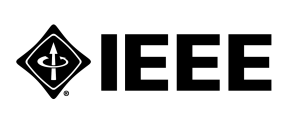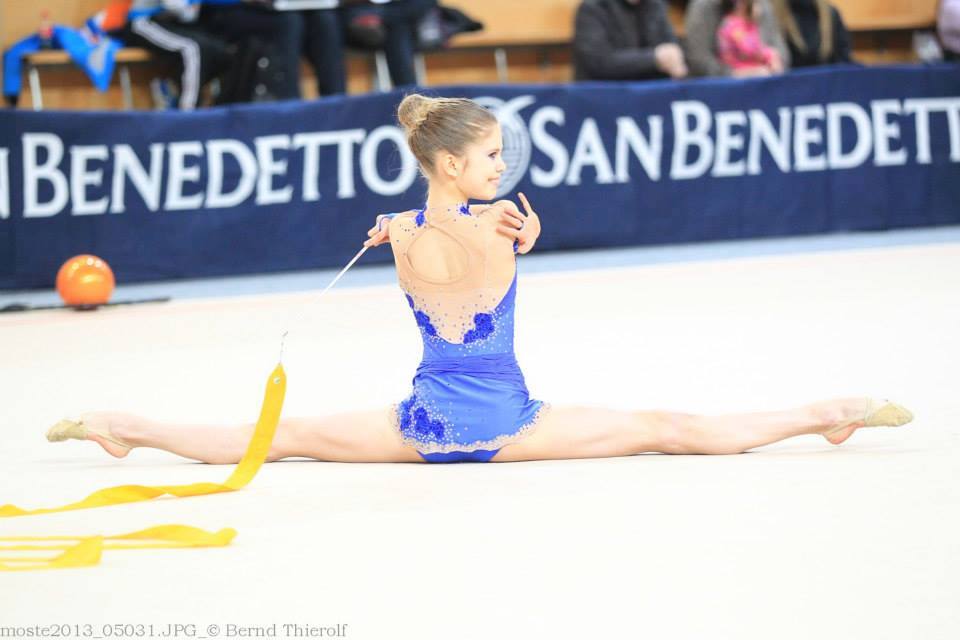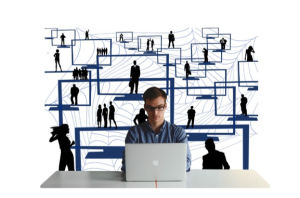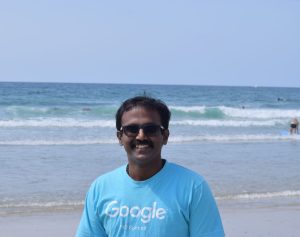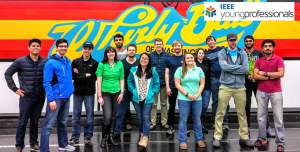In today’s article we bring you the story of a young female biomedical engineer, aspiring to make an impact in the world of neurogenesis and hippocampal prostheses. We are speaking to Veronika Cencen who is an extraordinary individual having lived in many countries, conducted research at different universities, competed in numerous international rhythmic gymnastics forums and devoted so much time to inspiring the next generation of scientists and engineers.
Veronika, please tell us a little about yourself.
My name is Veronika Cencen and I am a 22 year old M.Sc. student in biomedical engineering at the University of Ottawa. I was born in Ljubljana, Slovenia, but due to my father’s job as a diplomat, we moved to Beijing when I was two. I spent a total of 9 years in Beijing, 2 in Moscow, and did a semester study exchange in Kaunas, Lithuania with “breaks” of coming home for a few years in between moves. I’ve experienced many different schooling systems and taken part in a variety of activities and societies in this time, but one that has been a major part of my life (and identity) for the longest is rhythmic gymnastics, which I started at the age of 3 and continue at a national competitive level today.
You have a deep passion for biomedical engineering, in particular neurogenesis and hippocampal prostheses. What sparked your interest in this area and what involvement have you had so far?
I discovered the potential applications of stem cells as a middle school student at the Western Academy of Beijing. In my second year of high school, I decided to do a brief work placement at the Beijing University Laboratory of Nucleic Acid Technology, and my increasing interest drove me to do my B.Sc. in Biotechnology at the University of Ljubljana. However, in this time, I started discovering more about the potentials of incorporation of engineering in biomedicine, which lead me to transition to Biomedical Engineering for my master’s. I became particularly fascinated in the possibility in treating something as complex as the human memory system, so I continue to look for opportunities for research in this area.
You are currently pursuing a Masters degree at University of Ottawa – Biomedical/Medical Engineering. What are you researching?
Since last year, I have had the privilege of working in the Godin Lab on the development of a microfluidic device and setup capable of mechanical cell transfection and subsequent on-chip membrane damage assessment and agarose encapsulation, for which I was also glad to receive NSERC funding.
You have spent time conducting research in Slovenia and China. Can you please share with our readers some of the interesting research work being conducted there?
Both countries have strong research in the fields of genetic engineering for medical applications, both in research and therapy. Of course, one of the major focus areas today would be cancer prevention and treatment. Slovenia has a particularly strong biotechnological pharmaceutical industry, and I was lucky to take part in research projects and major events (such as the International Biocamp during my studies there.
You are an IEEE member. When did you join and what made you join? What involvement have you had with the IEEE so far?
I was introduced to and encouraged to join the IEEE student society this year by a colleague from Carleton, (who happens to be Co-Chair of the IEEE EMBS International Student Conference (ISC) 2016, founder of the Carleton University Canadian Medical and Biological Engineering student chapter and external Director at IEEE Carleton Student Branch). Since then I have tried to take part in IEEE-organized talks in my area, and I am currently preparing a paper on EEG instrumentation for the IEEE EMBS ISC at Carleton. Additionally, I have joined the a team working on increasing the involvement of the University of Ottawa with IEEE, including the development of a student chapter there.
As well a love for science and engineering you also love gymnastics and have competed at elite levels. How did this come about?
Yes, it’s true that I continue to combine this major commitment with my primary career in science and engineering. This year I am even trying out for the Canadian National Team! Rhythmic gymnastics has been part of my life, and will follow me wherever I go. This was a great way to meet friends with similar interests throughout my travel-dynamic childhood, and also gave me the chance to be more in touch with the local communities and learn the languages (I am now comfortable with 6 languages), since I always practiced with the national teams. Like any competitive sports career, it will be quite difficult but necessary to eventually let go!
You also spend much time volunteering. Tell us about this work.

I have been involved in a range of causes, from environmental to creative, athletic, humanitarian. Currently, in addition to my activities with the Biomaterials Society at uOttawa, I am also an active volunteer for Let’s Talk Science, the Aboriginal Mentorship Program, Science Travels, and the Catalyst scientific journal. Of course, I do make sure these activities do not get in the way of my duties as a research and teaching assistant!
Interview conducted by Eddie Custovic, Editor in Chief, IMPACT by IEEE Young Professionals


